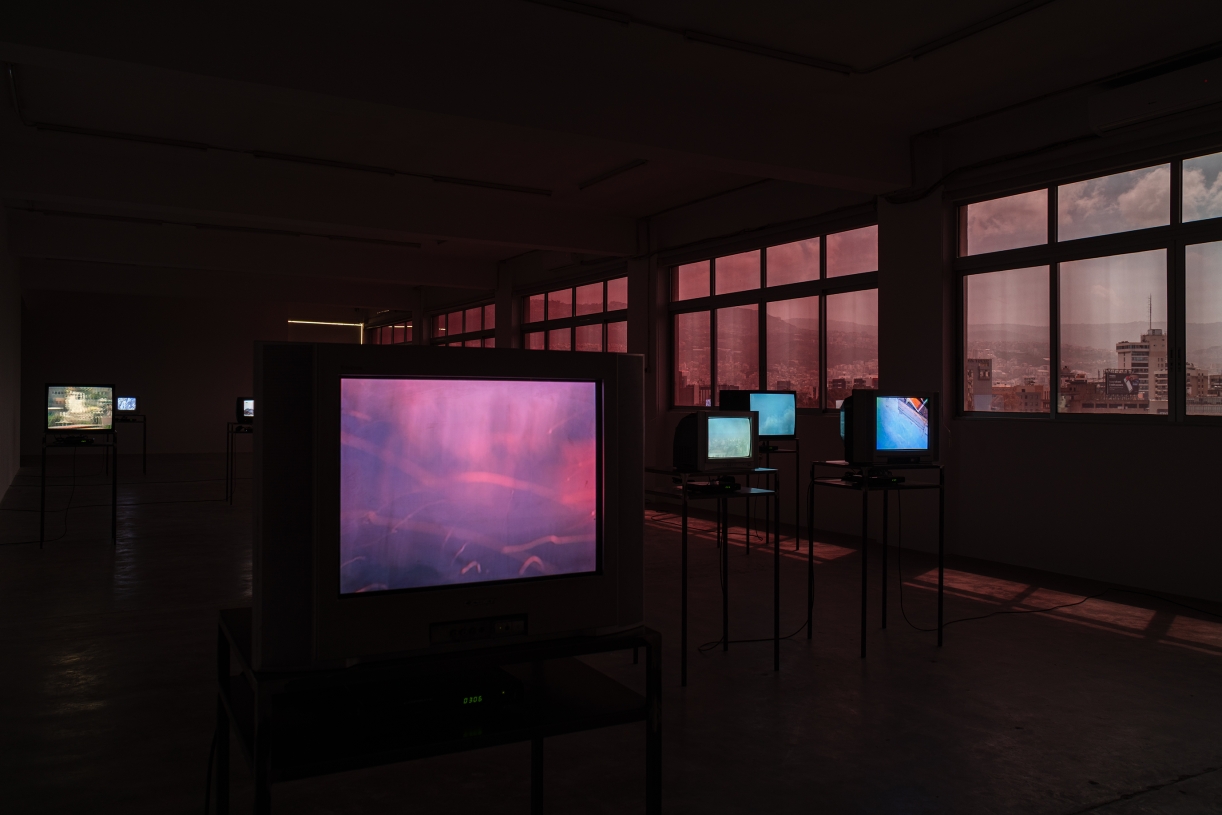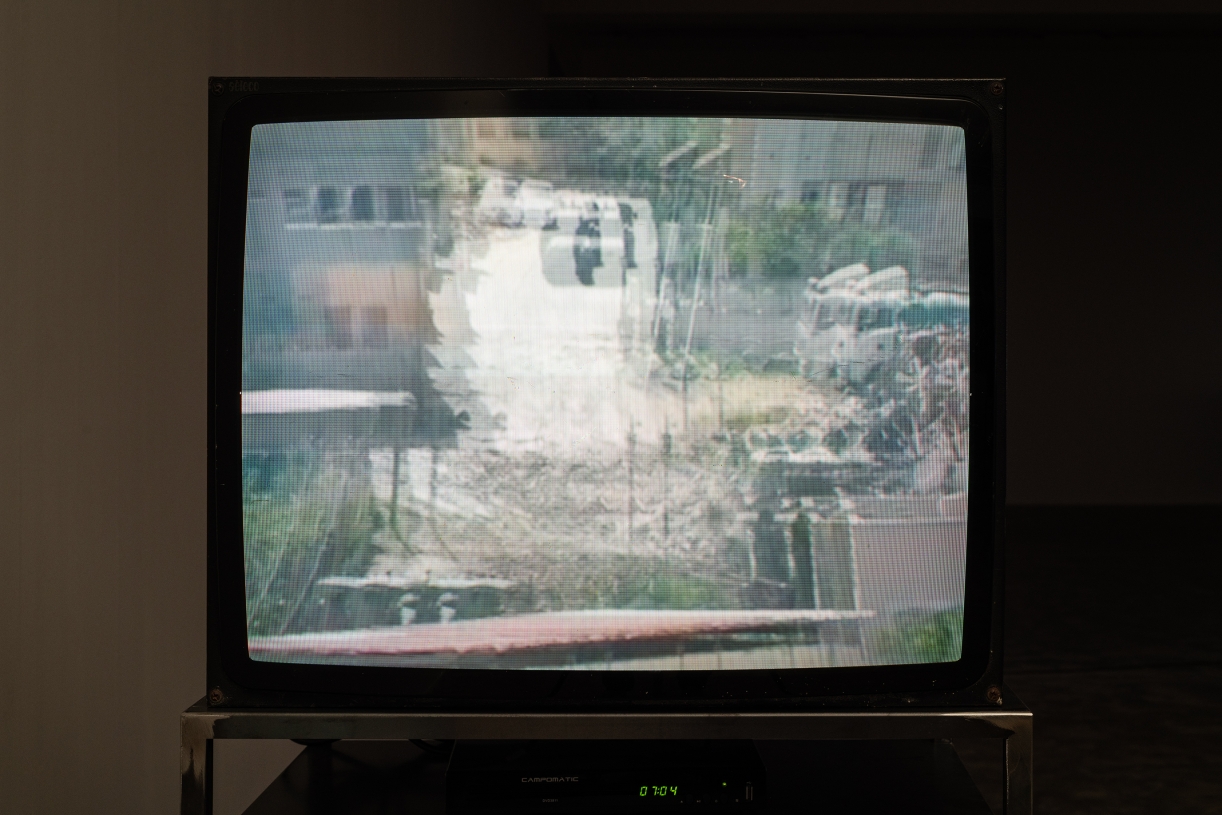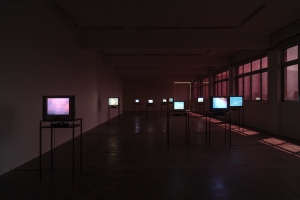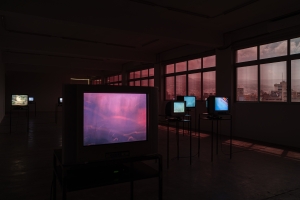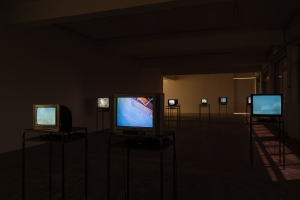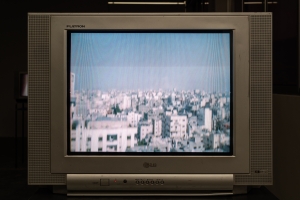Planned Obsolescence
Planned Obsolescence
Planned Obsolescence, 2025, 10 TVs, still images, variable dimensions
During their work to analyze and reconstruct Israeli crimes in Gaza and Lebanon, Abu Hamdan and his team at Earshot, Caline Matar, Fabio Cervi and Adnan Naqvi, noticed a disturbing trend in the kind of footage they were being asked by journalists and human rights researchers to analyze. The camera footage was unlike that from previous wars: rather than document the incidents from a distance, these cameras and journalists were the direct target of the attack. By now, it is well documented that the Israeli Army have systematically targeted and killed journalists, but some of the cases Earshot analyzed also saw that it was the cameras themselves being shot, and live stream servers being detonated. In this work, we see the last images of these cameras by which they document their own destruction.
The title, Planned Obsolescence (2025), is taken from the term by which tech corporations systematically manufacture obsolescence into their products to maintain the cycle of overconsumption. These images documents are shown on TVs that have been picked up from the dustier corners of museums’ storage rooms, junk shops and vintage stores across the city, equipment that has survived their planned obsolescence and still functions despite being ‘outmoded’. In this way, the work puts into contradiction a media that is at its most vital and needed, a media that is under threat of extinction with the devices of their display, devices that, despite being unwanted, somehow remain alive.

